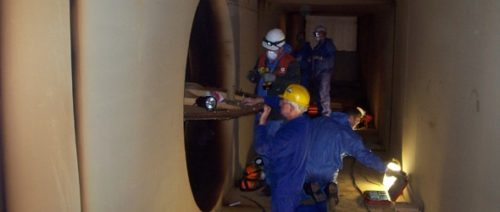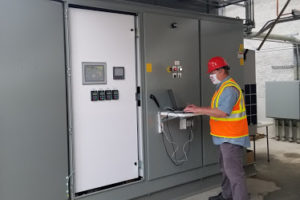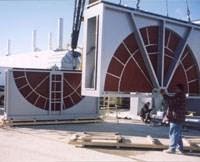
2020 has been the year many manufacturers have had to pivot into to the unknown. Your pollution control equipment must be considered as you make key business decisions. Whatever your new business landscape, Anguil is ready to assess your current equipment, production requirements, and capacities to develop a strategy that meets your emerging business needs.
Have you had to make any of these business decisions in 2020?
- Adding new process line(s) for expanded or new product offerings
- Consolidating production plants or building new facilities
- Speeding up process lines
- Changed process inputs
In the face of uncertainty and rapid change, strategic investment in your existing pollution control systems can keep you in compliance and offer opportunities for rapid return on investment (ROI). Instead of a new capital equipment purchase, consider retrofitting your existing equipment to fit tight timelines and lean budgets.
Here are three high payback equipment retrofits to consider.
Increase Capacity to Accommodate Production Changes
Add more flow to your existing oxidizer.
Anguil makes it easy to reimagine the possibilities of your pollution abatement equipment. If you have had to expand or consolidate production lines, you can retrofit your existing equipment to treat additional flow.
How to Evaluate Capacity Changes
Is the new flow over capacity of existing unit?
When evaluating capacity modifications, start by determining your current state and comparing it with the future.
- Confirm existing flow, VOC loading, and temperature to oxidizer
- Confirm new flow, VOC loading, and temperature to oxidizer
Can modifications be made to the existing unit to increase capacity?
Most of the time, the answer is yes. Review the VOC loading and confirm it does not exceed capacity of the unit type. Anguil’s engineering experts can help you confirm your capacity modification possibilities.
What components need to be upgraded to increase RTO capacity?
Once your capacity parameters are determined, several components need to be evaluated to accommodate the flow expansion.
- Upsize the Burner: Review burner system, fuel train, SFI
- Change Media Design: Review media bed design – size, depth, type of media, velocity, TER, and pressure drop, residence time
- Upsize Fan: Review fan/VFD sizing – flow, temp and pressure rating
- Add an Emission Concentrator: Reduce the flow to your oxidizer by concentrating large flows of low concentration air upstream of the inlet
Reduce Downtime with Controls Upgrades + Strategic Spares Management
Prepare for the unexpected with modern controls and critical spares
Like an insurance policy, the savviest oxidizer operators invest great care in preventive safeguards for resiliency in the face of unexpected downtime. Two high impact, low effort investments you can make to reduce downtime are oxidizer controls upgrades and strategically stocking your spare parts inventory.
Controls Upgrades
Because your oxidizer controls will generally function without incident even with older software and hardware, you may not consider them an upgrade or replacement priority. That is, until you experience a lengthy downtime due to a PLC crash or not having spares for an obsolete system.
Anguil has extensive experience consulting with operators on their oxidizer controls needs and developing custom solutions to prevent unplanned downtime, safety and compliance risks, and obsolete part headaches.
Are you ordering replacement control panel parts from Ebay? Or struggling to find support for your obsolete control components?
While obsolete parts may function, they expose you to many risks ranging from lengthy downtime to lack of service support. Because
Answer: Anguil Aftermarket can help identify which components are slated to be discontinued by completing a Controls Review of your current installed components and make Controls Upgrade recommendations
Is your PLC or HMI exhibiting signs of vulnerability, such as program loss or failure?
A failed display can leave you blind when it comes to operating your oxidizer system safely. If this happens at an inopportune moment, you want to be prepared to download your HMI program to a replacement display from your spare parts inventory.
Answer: Anguil Aftermarket can perform PLC Upgrades, even if source code is unavailable. Our electrical and field service engineers will specify, supply, and install replacement hardware and supply and commission new software.
Are your oxidizer controls upholding your safety commitment?
Even if your system is using aging or obsolete components without issue, your system may not be meeting modern safety standards.
Answer: Anguil Aftermarket can review your program logic, make Operational Efficiency and Safety Improvements, and develop a custom solution.
Do you wish you had clearer insight into the workings of your oxidizer’s PLC? What if your oxidizer’s controls could be e
Hardware improvements such as a Human Machine Interface (HMI) Upgrade can provide better system control and visibility on machine operation and troubleshooting via improved graphics and diagnostics.
Answer: Anguil Aftermarket employs a user-friendly 10” HMI option that provides easy operation with a graphical overview with process values, loop bar graphs, trends, and I/O and purge interlock status. Additional upgrades such as Digital Chart Recorders and Remote Ethernet Access can unlock the full potential of modern oxidizer control technology.
Stocking Your Spare Parts Inventory
Why does my oxidizer spare parts program deserve significant attention?
- Uptime – The downtime associated with a system upset can be dramatically reduced if the right parts are immediately available on site.
- Compliance – Stocking an appropriate level of spare parts for your oxidizer system may be required by your envir
onmental permit.
- Preparedness – Making the decision to have a well-stocked spare parts inventory could be the difference between having the needed component available in your stockroom to get your system quickly back online versus lengthy downtime, lost production revenue, and plant headache.
- Mission – Stocking an appropriate level of spare parts for your system is a vital step in a long-term commitment of environmental compliance.
How Does Anguil Determine my Recommended Spare Parts List?
Using your system process and instrumentation diagram (P&ID) and bill of materials (BOM), Anguil’s Aftermarket Experts can design a custom-tailored recommended Critical Spare Parts Package for you. Yes, we can do this for any oxidizer system regardless of manufacturer! Plus, we can supply parts for your ancillary equipment including scrubbers, concentrator wheels, and dust collectors. We tag each system component as falling into one of four categories: CRITICAL, RECOMMENDED, CONVENIENCE, and WHEN NEEDED.
| Level | Description | Examples |
| Convenience | Consumables not critical to system operation | Filter elements, door gasket |
| Critical | High-use and high-wear parts that are vital to system operation, parts that may have a long lead-time | Actuators, poppet valve components, thermocouples, flow sensors, and spark igniters |
| Recommended | These items are not typically known to fail; however, they cannot safely be bypassed if they do | Air proving switches, PLC components, and fuel train components |
| When Needed | Parts that are unlikely to fail or not generally critical to system operation | Burners, gauges, and flex joints |
What is a Critical Spare Parts Package?
A critical spare parts package bundles the most critical spare components for your system at a discounted price.
Why should I consider a Critical Spare Parts Package?
This convenient package takes the guesswork out of ordering spare parts and saves you money. In addition to meeting compliance requirements and strengthening your downtime firewall, we discount this package over the cost of ordering individual parts.
Why order spare parts through Anguil?
Anguil can simplify your parts procurement process. We know your system, so let us quickly get you the parts you need. If we don’t know your system, our engineering experts can quickly assess your system and determine your parts needs. Anguil has an expansive network of vendor relationships and enjoys priority service and advantageous pricing that we pass on to you.
Increase Thermal Energy Recovery (TER) for High Impact ROI
Improving TER with a media upgrade
Considering some enhancements to your RTO? Your RTO’s media is a key target area for high return on investment (ROI). Many operators consider media replacements primarily out of necessity due to plugging, but a lot of potential upside may be available by focusing on your media’s TER performance. Consider this:
- Up until recently, most RTOs were designed with 95% Thermal Energy Recovery (TER%) or less.
- Rule of Thumb for a self-check: If the average RTO outlet temperature is more than 100°F higher than the RTO inlet temperature, your actual TER% is probably less than 95%.
- Even a small increase in TER% can have a dramatic effect on RTO fuel usage. In some cases, a bump in TER% could eliminate RTO fuel use entirely.
- Advances in ceramic media have allowed Anguil to improve TER% in RTOs by only replacing a portion of the existing ceramic media beds, improving payback periods.
- Anguil has performed this retrofit on numerous RTOs, regardless of original manufacturer, and we offer free Savings Cost Analysis making it easy to get started.
How to Evaluate a Media Design Change
What is my current media design?
Start by determining your current state and comparing it with available possibilities. When evaluating your current media bed design, take note of the following:
- Type of media
- Bed dimensions
- Available space
What is my current media performance?
Next, determine your current process conditions to calculate your media’s current performance.
- Airflow
- Inlet temp
- VOC loading
- Combustion air from burner
- Current fan sizing and speed
What are my new design possibilities?
Look at different media suppliers and what designs are available. Important parameters to keep in mind
- Pressure drop across media beds – will it impact fan speed and possibly sizing?
- Total flow that needs to be treated – will it impact pressure drop and velocity through media?
How much savings can I expect?
The cost of your media retrofit versus your projected fuel savings will determine your ROI. For a free assessment and consultation, complete our Savings Cost Analysis. Upon submittal, an Anguil Aftermarket expert will contact you for a follow-up consultation.
As a custom solutions provider, Anguil’s team of experienced engineers will partner with you to understand your system, regardless of make, model, configuration, or manufacturer, tailoring your retrofit project to maximize system performance. Contact us to get started on your high impact retrofit project.


 onmental permit.
onmental permit.